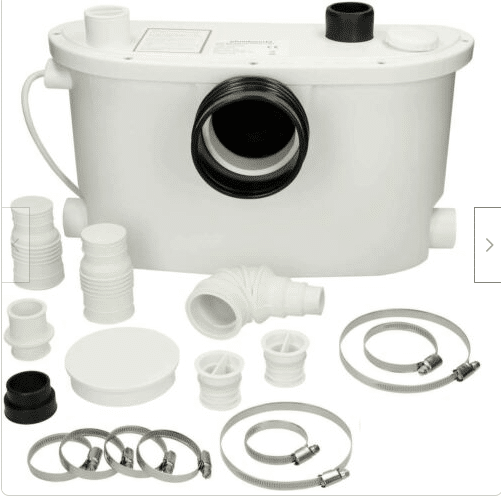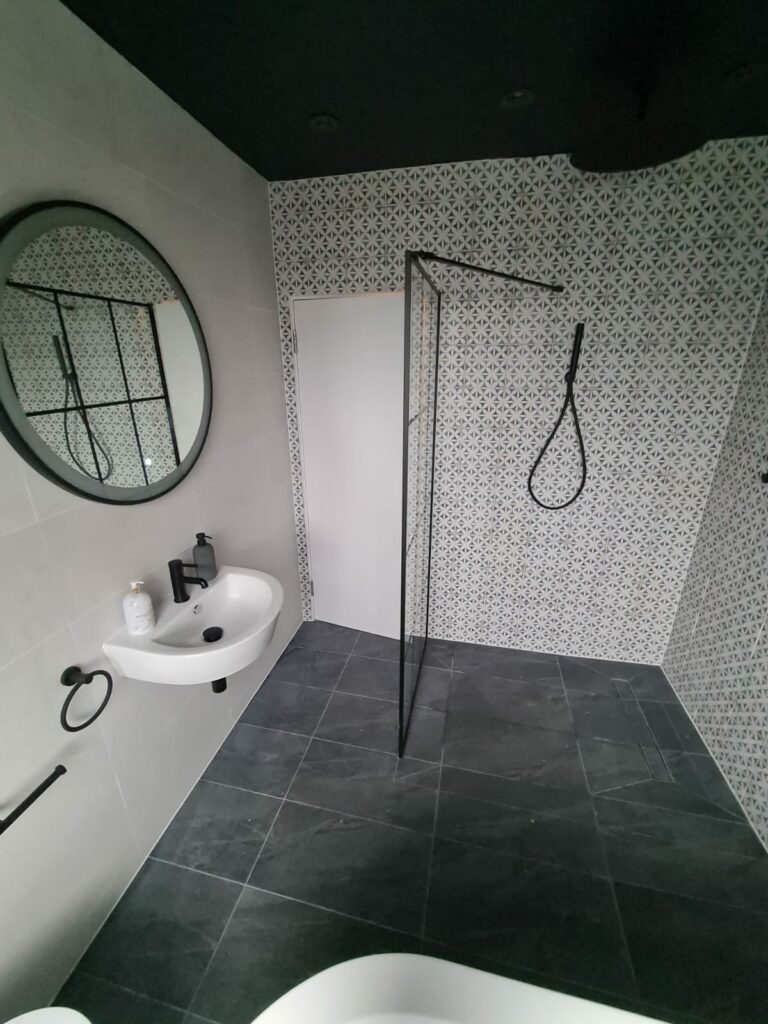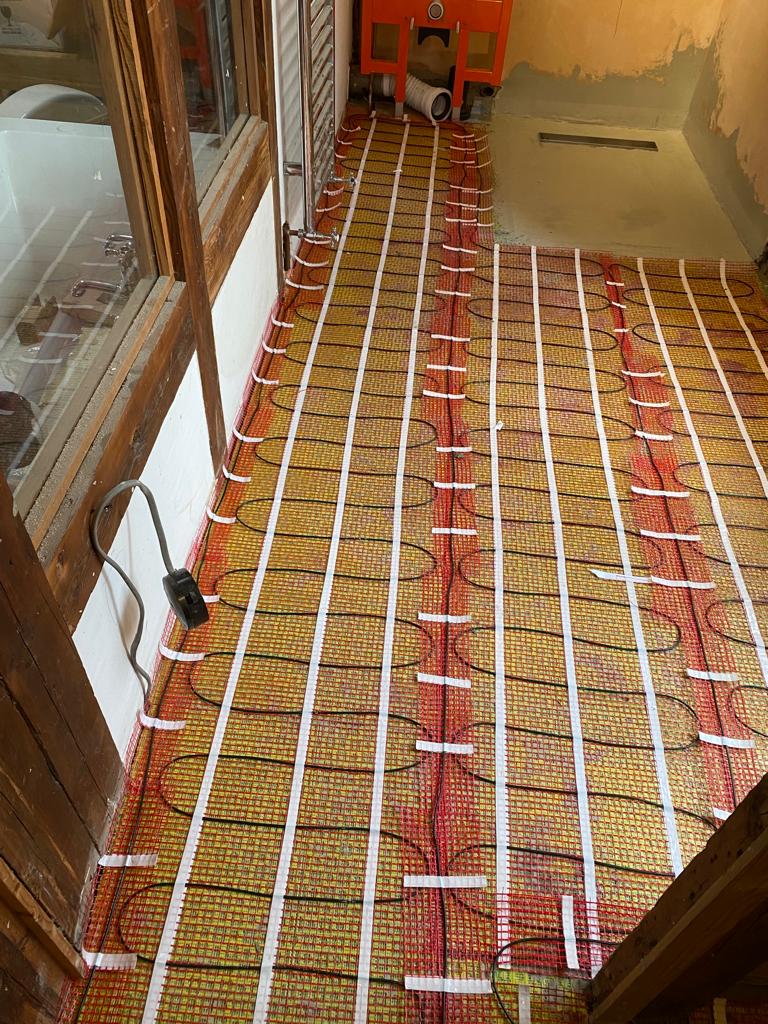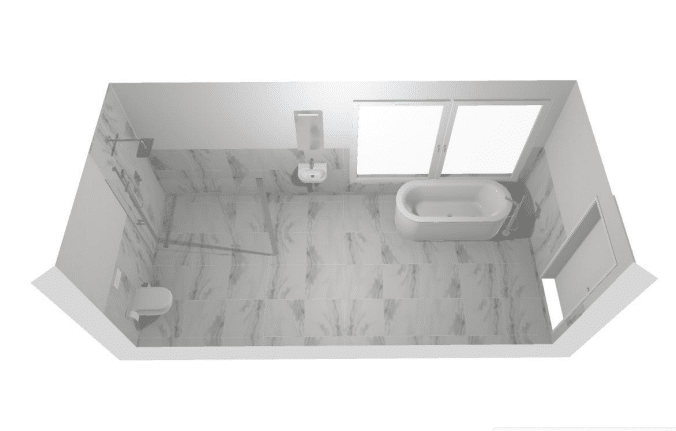Diving into the world of bathroom electrics, it’s crucial to grasp that water and electricity form a risky combination. To tackle this, England enforces strict electrical regulations tailored to ensure safety in these moisture-rich environments.
I come with years of hands-on experience in ensuring these standards are met, manoeuvring through complex rules with finesse, making me your guide to understanding and implementing them effectively.
The backbone of these regimens is the 18th edition IET wiring regulations—a rulebook that all electricians swear by. These regulations not only safeguard our homes but also keep us from stepping into dangerous waters—literally and figuratively.
As we unravel the layers of bathroom electrical rules together, you’ll discover how they shield you daily from unseen hazards. Prepare for sparks of insight!
Electrical Regulations for Bathrooms in England
Understanding the Zones: Bathrooms are divided into zones based on their potential exposure to water, determining what electrical devices are allowed in each area. Circuit Protection Requirements: Residual current devices (RCDs) and circuit breakers must be installed to protect against electric shock in bathroom circuits.
Understanding the Zones
Bathroom zones in England are critical for electrical safety, as they dictate where and how electrical devices can be used. Zone 0 is the area inside the bath or shower itself and requires fittings to be low voltage and completely immersion proof.
Moving outward, Zone 1 extends above the bath or shower up to a height of 2.25 metres from the floor; only water jets protected fixtures rated at least IPX4 should be installed here.
In Zone 2, which stretches beyond Zone 1 for another 0.6 metres horizontally and up to the ceiling height, similar protection levels apply but more leeway is given for fixture types.
Beyond this zone lies an area where no specific IP rating is required but common sense still dictates caution due to moisture present in bathrooms at large. These regulations safeguard against electric shock hazards by ensuring appropriate installation of lights, heaters, and sockets according to their designated bathroom zones.
Devices Allowed in Bathrooms
Approved devices allowed in bathrooms include shaver sockets, which are designed for use with electric shavers and toothbrushes. They must be installed at a safe distance from water outlets to prevent any risk of electric shock.
Another permissible device is a standard light switch or pull cord switch; however, it should be positioned away from the direct spray of water to ensure safety. Under electrical regulations, fixed electrical installations such as water heaters and extractor fans are also permitted but need to comply with strict wiring regulations and be properly installed by a qualified electrician.
Waterproof sockets rated for bathroom installation can also be utilised where necessary. These waterproof sockets provide added protection against moisture and are crucial for ensuring the overall safety of electrical installations within bathroom environments.
Circuit Protection Requirements
Transitioning from the devices allowed in bathrooms, it’s crucial to understand the circuit protection requirements for ensuring electrical safety. All circuits within a bathroom must be safeguarded by Residual Current Devices (RCDs) with a maximum tripping current of 30mA.
This regulation aims to prevent electric shock and protect individuals from potential hazards associated with water and electricity. Additionally, fixed electrical installations are legally mandated to comply with BS 7671:2008 ‘Requirements for Electrical Installations’ to guarantee safe usage within bathroom environments.
To enforce proper circuit protection requirements, stringent regulations under Section 701 last updated in 2008 govern all electrical installations within bathrooms comprehensively.
Ensuring Safety in Your Bathroom
Minimising Risks and understanding IP Ratings are essential for electrical safety in bathrooms. Regular Electrical Safety Checks can help prevent potential hazards and ensure compliance with building regulations.
Minimising Risks
To minimise risks in your bathroom, ensure that all electrical circuits are protected by a Residual Current Device (RCD) with a maximum rating of 30mA. It is important to regularly check the condition and compliance of electrical installations by obtaining an Electrical Installation Condition Report (EICR) from a qualified professional.
Complying with these regulations will help to mitigate the risk of electrical accidents in your bathroom.
Understanding IP ratings for devices used in bathrooms can also help reduce the risk of electric shock or fire hazards. By choosing appropriate IP-rated devices, you can ensure safety and compliance with relevant regulations.
Regular checks and proper installation are essential aspects of maintaining a safe bathroom environment.
IP Ratings Explained
Understanding IP ratings is crucial when considering electrical safety in bathrooms. The IP (Ingress Protection) rating system categorises the degree of protection provided by an electrical enclosure against intrusion from foreign bodies, such as dust and moisture.
The first digit in the two-digit rating refers to the level of protection against solid objects, while the second digit indicates resistance to water. For instance, an IP44-rated device provides sufficient protection against small tools and most wires, as well as splashing water.
In contrast, an IP65-rated fitting offers complete defence against dust and powerful jets of water from all directions.
Regular Electrical Safety Checks
Now, let’s delve into the importance of regular electrical safety checks in bathrooms. Ensuring the ongoing safety and compliance of electrical installations is critical. With regulations mandating fixed electrical installations to comply with BS 7671:2008, it becomes essential to conduct Electrical Installation Condition Reports (EICRs) periodically.
These assessments ensure that all circuits are effectively protected by an RCD not exceeding 30mA, as required for bathroom safety regulations in England. By carrying out regular EICRs, homeowners can proactively identify and address any potential issues, ensuring the ongoing safety and compliance of their bathroom’s electrical installations.
Conclusion
In conclusion, following the electrical regulations for bathrooms in England is crucial to ensure safety. Regular checks and compliance with the zoning and circuit protection requirements are essential.
Understanding IP ratings and minimising risks can contribute to a safer bathroom environment. Adhering to these regulations will help maintain electrical safety in bathrooms across England.
FAQs
1. What are the bathroom electrical regulations in England?
In England, bathroom electrical regulations include RCD (residual current device) protection for all circuits and strict guidelines on where electrics can be placed within different bathroom zones according to UK Building Regulations.
2. Why do I need RCD protection for my bathroom?
RCD protection is vital to protect you from electric shock due to water being a good conductor of electricity, which increases risks in wet areas like bathrooms; it’s also part of the Electrical wiring regulations.
3. Can I install sockets in my bathroom under these regulations?
The Part P regulations state that sockets generally aren’t allowed in bathrooms unless they’re at a safe distance from water outlets, such as outside zone 2 or beyond, ensuring maximum safety against electrical hazards.
4. What about lighting and ventilation in my bathroom?
Bathroom lighting and ventilation must comply with Bathroom electrical codes, which define how lights should be installed safely away from moisture and ensure fans effectively remove steam to prevent damp issues.
5. Do I need professional inspections for my bathroom electrics?
Yes, any new or altered electrical installations in your bathroom will likely require an inspection by a certified electrician to confirm compliance with Bathroom electrical safety standards set out by Building regs for bathrooms.









